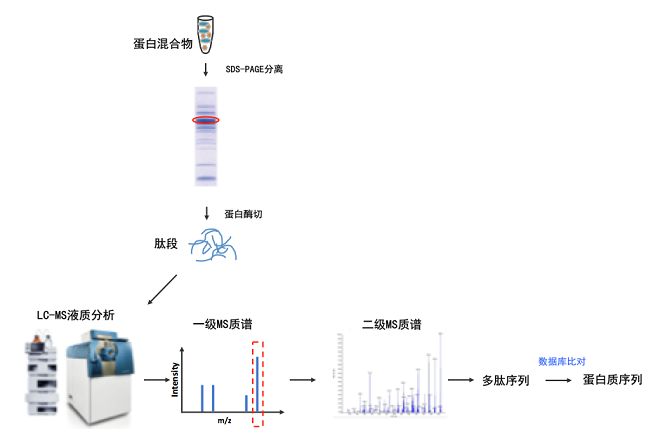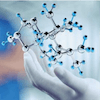Mass Spectrometry-based Sequence Analysis
Mass spectrometry-based sequence analysis of proteins, antibodies, polypeptides, and other samples involves examining the amino acid sequences of the samples. Mass spectrometry sequencing refers to the determination of the primary amino acid sequence of samples using mass spectrometry. Before delving into mass spectrometry sequence analysis, let's briefly introduce a few definitions. Amino acids are organic compounds containing amine (-NH2) and carboxyl (-COOH) functional groups, along with a unique side chain (R group) for each amino acid. Peptides are short chains composed of two to fifty amino acids connected by peptide bonds. Polypeptides are longer, continuous, unbranched chains that can contain up to about fifty amino acids. Polypeptides/peptide chains with more than fifty amino acids are referred to as proteins. Proteins consist of one or more polypeptides arranged in a biologically functional manner and can typically bind to ligands (such as coenzymes and cofactors), other proteins, other macromolecules (such as DNA or RNA), or more complex macromolecular assemblies. Antibodies (Ab), also known as immunoglobulins (Ig), are large Y-shaped proteins primarily produced by plasma cells and used by the immune system to neutralize pathogens such as pathogenic bacteria and viruses.
Related Services:
Mass Spectrometry-Based Protein Sequencing
Mass Spectrometry-Based Antibody Sequencing
Mass Spectrometry-Based Polypeptide Sequencing
Compared to the Edman degradation method, the advantage of mass spectrometry sequencing is that it is more sensitive, can cleave peptides faster, and can identify protein samples with blocked or modified termini. Biotech company Brightage utilizes existing high-resolution mass spectrometry technology platforms to provide mass spectrometry-based sequence analysis services, achieving 100% coverage of the target protein sequence.

Mass Spectrometry Sequencing Schematic
In protein sample sequence analysis, Trypsin is generally used for enzymatic digestion of proteins, achieving approximately 60% peptide coverage. To obtain the full sequence information of the target protein, Biotech company Brightage employs six commonly used proteases (Trypsin, Chymotrypsin, Asp-N, Glu-C, Lys-C, and Lys-N) in the protein sequence analysis process to individually digest the target protein and perform mass spectrometry, achieving 100% determination of the protein sequence through peptide fragment stitching. Brightage uses Thermo's newly launched Obitrap Fusion Lumos mass spectrometer for protein sample sequence analysis. The Obitrap Fusion Lumos is currently the highest resolution and sensitivity mass spectrometer, ensuring sensitivity in identifying low-abundance peptide fragments. During peptide fragmentation, a combination of HCD and ETD modes is used to ensure the integrity of the peptide fragments. It can achieve N-terminal, C-terminal sequence analysis, and full-length sequence analysis of protein samples. For samples with unknown theoretical sequences, de novo sequencing can be used for sequence analysis.
Brightage provides the following mass spectrometry-based sequence analysis services:
How to order?








